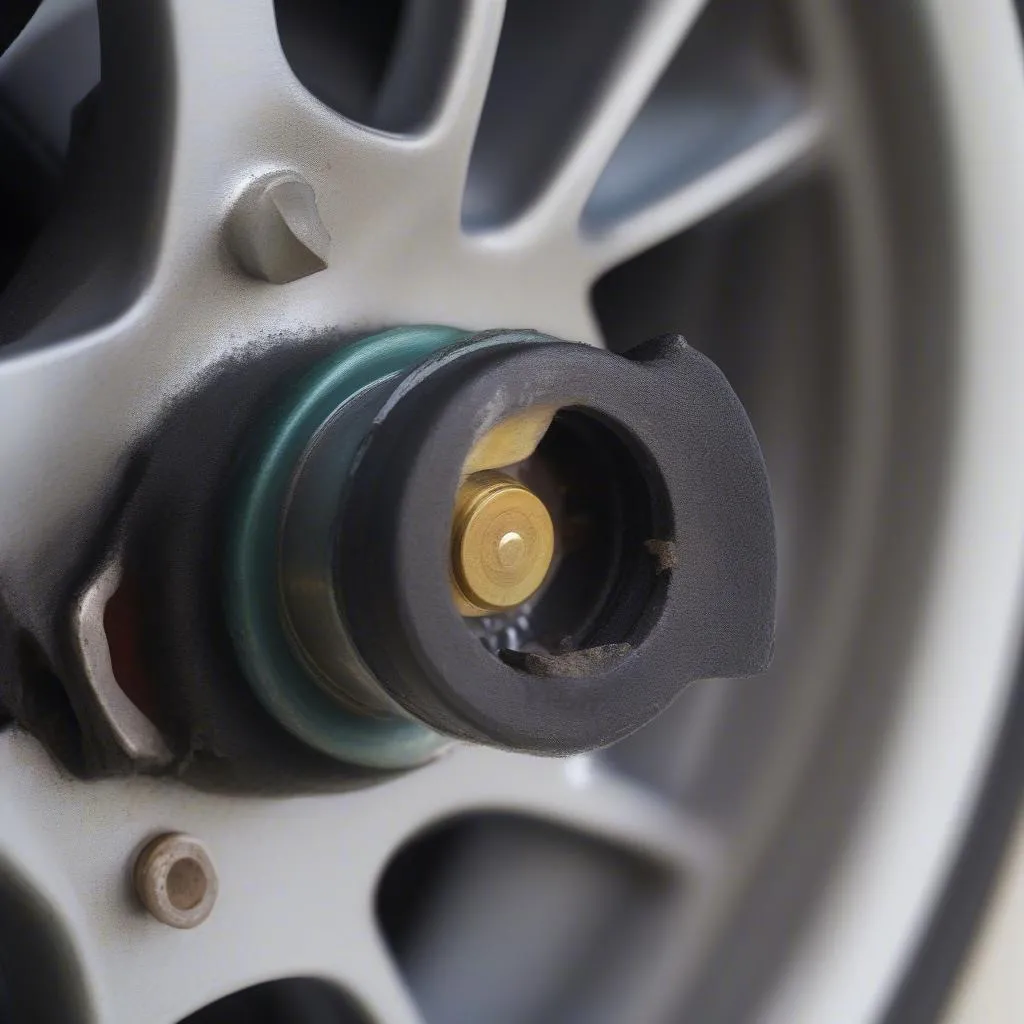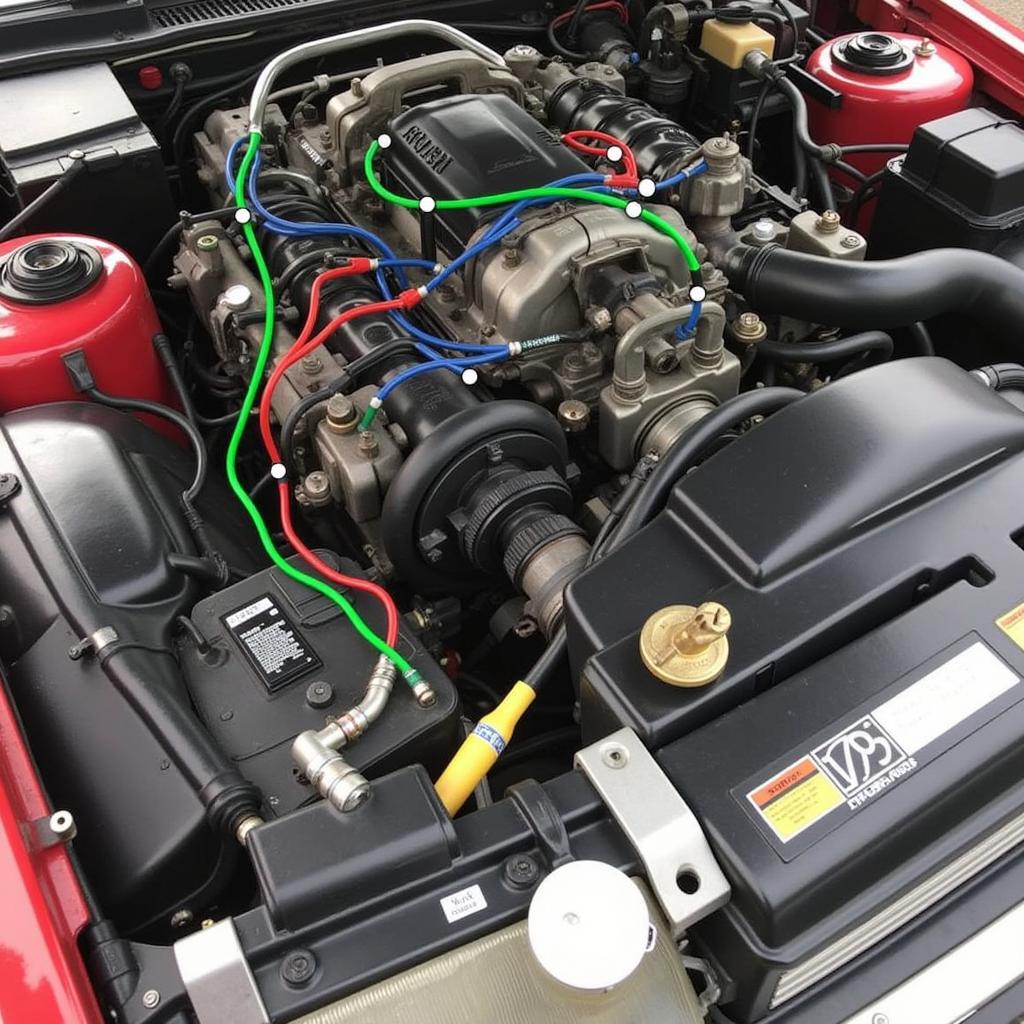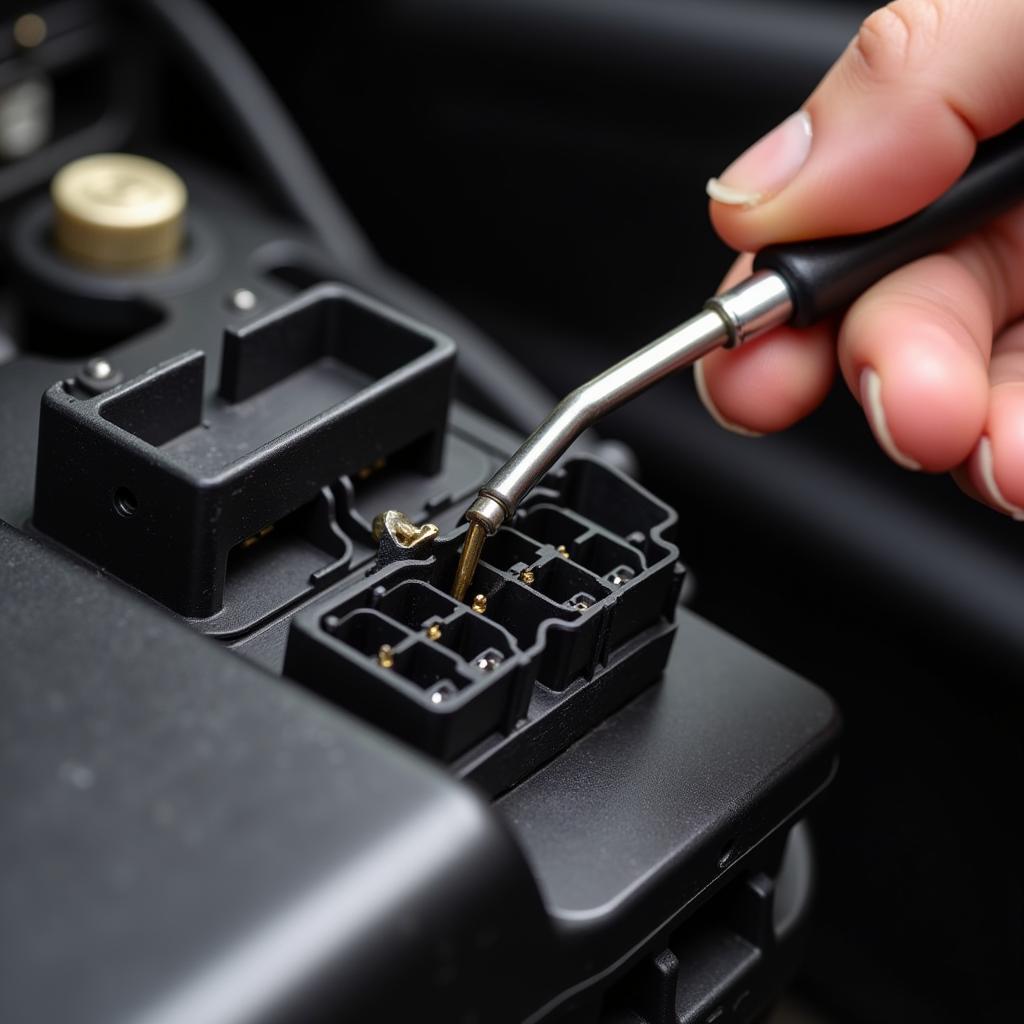Seeing the ABS light illuminate on your Mercedes dashboard can be unnerving. While it signals a problem with your Anti-lock Braking System, it doesn’t always mean a trip to the mechanic is necessary. This comprehensive guide will walk you through identifying the cause and, in many cases, fixing the issue yourself.
Understanding the ABS Light
The ABS system is crucial for safe braking, especially in slippery conditions. When the ABS light turns on, it indicates that the system has detected a fault and might not function correctly. However, don’t panic! This light doesn’t necessarily mean complete brake failure. Your standard braking system likely remains operational.
Common Causes of an ABS Light on Mercedes
Several factors can trigger the ABS light. Let’s look at some of the most frequent culprits:
1. Faulty Wheel Speed Sensors
Your Mercedes relies on wheel speed sensors to monitor each wheel’s rotational speed, crucial data for the ABS system. If a sensor malfunctions or gets covered in dirt, it can disrupt the signal and trigger the warning light.
 Faulty Wheel Speed Sensor
Faulty Wheel Speed Sensor
2. ABS Module Issues
The ABS module acts as the brain of the system. Over time, electrical problems or exposure to harsh conditions can cause the module to malfunction, leading to the ABS light.
3. Low Brake Fluid Level
Brake fluid is essential for transmitting pressure from the brake pedal to the wheels. Low brake fluid can indicate a leak or worn brake pads, indirectly affecting the ABS system and illuminating the warning light.
4. Problem with the Brake Pedal Switch
Your Mercedes has a switch activated when you press the brake pedal, signaling the ABS system. A faulty brake pedal switch can send incorrect information, potentially triggering the ABS light.
Diagnosing the Problem: What You’ll Need
Before diving into fixes, you’ll need the right tools to pinpoint the issue:
- OBD-II Scanner: This tool allows you to read the error codes stored in your Mercedes’s computer, providing valuable insight into the ABS light’s root cause.
- Basic Mechanic’s Toolset: This set will come in handy for tasks such as checking wheel speed sensors.
- Multimeter (Optional): A multimeter can help test for continuity and voltage, which can be useful in diagnosing sensor or wiring issues.
 OBD2 Scanner and Tools
OBD2 Scanner and Tools
Step-by-Step Guide to Fixing the ABS Light
1. Read the Error Codes:
- Connect your OBD-II scanner to your Mercedes’s OBD-II port, usually located under the dashboard on the driver’s side.
- Turn on the ignition but don’t start the engine.
- Use the scanner to retrieve the error codes. Note down all the codes displayed.
2. Decipher the Codes:
- Refer to your car’s service manual or a reputable online database to understand what each code signifies.
- Common ABS-related codes include those related to wheel speed sensors, the ABS module, or the brake pedal switch.
3. Address the Specific Problem:
- Faulty Wheel Speed Sensor: Inspect the sensors for visible damage or debris. Clean them if necessary. If cleaning doesn’t resolve the issue, you might need to replace the sensor.
- ABS Module Problems: Diagnosing and fixing module issues often require specialized knowledge and tools. Consult a qualified mechanic experienced with Mercedes-Benz vehicles if you suspect a problem with the module.
- Low Brake Fluid: Check the brake fluid level in the reservoir. If it’s low, add the recommended brake fluid type for your Mercedes. Low fluid might indicate a leak, so inspect the brake lines and connections for any signs of leakage.
- Brake Pedal Switch Issues: Test the switch for continuity with your multimeter. Replace the switch if it fails the continuity test.
4. Clear the Codes and Test:
- Once you’ve addressed the specific problem, use the OBD-II scanner to clear the error codes.
- Take your Mercedes for a test drive to see if the ABS light stays off. If the light remains off, you’ve successfully fixed the problem!
Frequently Asked Questions
Q: Can I drive my Mercedes with the ABS light on?
A: While the standard braking system likely still works, driving with the ABS light on is not recommended. The ABS system is deactivated when the light is on, meaning you won’t have anti-lock braking functionality in emergency situations.
Q: How much does it cost to fix an ABS light on a Mercedes?
A: The cost can vary greatly depending on the root cause. Simple fixes like a sensor cleaning or brake fluid top-up might be relatively inexpensive. However, complex repairs involving the ABS module could be significantly more costly.
Q: Are there any preventative measures to avoid ABS light issues?
A: Yes! Regularly inspecting your brake fluid levels, ensuring the brake system is well-maintained, and periodically cleaning the wheel speed sensors can go a long way in preventing future ABS light problems.
Looking for reliable diagnostic tools for your Mercedes? Check out the range of high-quality OBD-II scanners and other automotive diagnostic equipment available at Cardiagtech.
Conclusion
Addressing the ABS light on your Mercedes might seem daunting initially, but by following this guide and understanding the common causes, you can often diagnose and fix the issue yourself. However, remember, while some fixes are straightforward, others require specialized expertise. If you’re unsure about any step, it’s always best to seek assistance from a qualified Mercedes-Benz mechanic.
Remember: Safety always comes first. Don’t hesitate to contact a professional if you need help identifying or fixing the problem.



